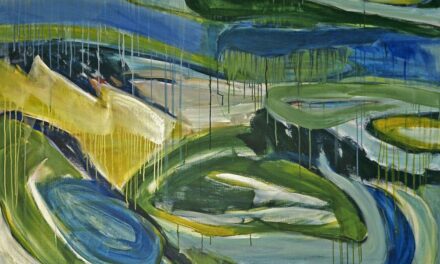Henri Matisse was born on 31 December 1869 in Le Cateau-Cambrésis, a small town in northern France. He was the eldest son of a grain merchant and was raised in a middle-class family. Matisse initially studied law and worked as a court administrator.
At the age of 21, he discovered his passion for art whilst recovering from a serious illness, during which his mother provided him with art supplies to occupy his time. This experience prompted him to pursue a career in art, leading to his enrolment at the Académie Julian in Paris in 1891. He studied under the renowned academic painter William-Adolphe Bouguereau and later with the symbolist painter Gustave Moreau at the École des Beaux-Arts.
Matisse’s early works were influenced by the traditional academic style, but he soon began to experiment with more avant-garde techniques and styles. Matisse’s education and early life significantly influenced his artistic development. His exposure to both traditional academic training and more experimental approaches laid the foundation for his unique style.
His time at the Académie Julian and the École des Beaux-Arts provided him with a solid technical foundation, whilst his later interactions with artists such as Paul Cézanne and Vincent van Gogh inspired him to explore new ways of representing the world through art. This combination of influences shaped Matisse’s artistic style and set him on a path towards becoming one of the most influential artists of the 20th century.
Summary
- Henri Matisse was born in 1869 in Le Cateau-Cambrésis, France, and studied law before discovering his passion for art.
- Matisse’s artistic style was influenced by the works of Cézanne, Gauguin, and Van Gogh, and he developed a unique style characterized by bold colours and fluid lines.
- Matisse was a leading figure in the Fauvism movement, which emphasised the use of intense colour and simplified forms to create emotional impact.
- Some of Matisse’s most famous works include “The Dance” and “The Red Studio,” and his legacy continues to influence modern art and design.
- In his later life, Matisse suffered from health issues that confined him to a wheelchair, but he continued to create art using paper cut-outs, which became a significant part of his legacy.
Artistic Style and Influences
Emphasis on Colour and Form
Matisse’s work is characterised by its emphasis on colour and form over realistic representation, as well as its use of simplified shapes and patterns.
Influences and Inspirations
His paintings often feature scenes of everyday life, such as landscapes, still lifes, and figures, which he reinterpreted through his unique artistic lens. Matisse’s artistic style was influenced by a wide range of sources, including the works of the post-impressionist painters Paul Cézanne and Vincent van Gogh, as well as non-western art forms such as Islamic textiles and African sculpture. He was also influenced by the decorative arts, particularly the intricate patterns and designs found in Islamic art and textiles.
A Unique Blend of Modernism and Tradition
These diverse influences led Matisse to develop a style that was both innovative and deeply rooted in tradition, blending elements of modernism with a timeless sense of beauty and harmony.
Fauvism Movement

Fauvism was a short-lived but influential movement in early 20th-century art that sought to liberate colour from its traditional role as a descriptive element and instead use it expressively. The term “fauvism” comes from the French word “fauve,” which means “wild beast,” and was coined by art critic Louis Vauxcelles to describe the bold, untamed use of colour by a group of artists including Henri Matisse, André Derain, and Maurice de Vlaminck. Fauvist paintings are characterised by their vivid, non-naturalistic colours and their rejection of traditional perspective and form.
Matisse’s role in the fauvism movement was central, as he was one of its founding members and its most prominent figure. His use of intense, pure colours and his bold, expressive brushwork set the tone for the movement as a whole. Fauvism was a radical departure from the artistic conventions of the time, and it had a lasting impact on the development of modern art.
Although the movement was short-lived, its influence can be seen in the work of later artists such as Pablo Picasso and Georges Braque, who were inspired by the fauvists’ bold use of colour and their rejection of traditional artistic norms.
Famous Works and Legacy
Henri Matisse produced a vast body of work over the course of his career, including paintings, sculptures, drawings, and prints. Some of his most famous works include “The Joy of Life” (1905-1906), “The Dance” (1910), and “The Red Studio” (1911). These paintings are characteristic of Matisse’s bold use of colour and his innovative approach to composition.
“The Joy of Life,” in particular, is considered one of Matisse’s masterpieces and is emblematic of his fauvist period. Matisse’s legacy as an artist is far-reaching and enduring. His innovative use of colour and form had a profound impact on the development of modern art, influencing subsequent movements such as cubism and abstract expressionism.
His work continues to be celebrated for its timeless beauty and its ability to evoke emotion through its use of colour and composition. Matisse’s influence can be seen in the work of countless artists who have been inspired by his bold, expressive style, making him one of the most important figures in the history of 20th-century art.
Later Life and Health Issues
In his later years, Matisse continued to produce art despite facing significant health challenges. In 1941, he underwent surgery for intestinal cancer, which left him wheelchair-bound for the rest of his life. Despite this setback, Matisse remained dedicated to his work and found new ways to create art from his bed using paper cut-outs.
This period marked a significant shift in his artistic practice, as he began to explore new techniques and materials that allowed him to continue working despite his physical limitations. Matisse’s later life was marked by a renewed sense of creativity and experimentation. His paper cut-outs, in particular, are considered some of his most innovative and influential works.
These pieces are characterised by their bold colours and dynamic compositions, as well as their use of simple shapes and forms. Matisse’s ability to adapt to his changing circumstances and continue producing groundbreaking art until the end of his life is a testament to his resilience and dedication to his craft.
Matisse’s Impact on Modern Art

The Pioneering Spirit of Matisse
Matisse’s influence can be seen in a wide range of artistic movements, from cubism to abstract expressionism, as well as in the work of individual artists who have been inspired by his bold, expressive style.
A Mentor to the Masters
Matisse’s legacy also extends beyond his artistic achievements. He was a mentor to many younger artists, including Pablo Picasso, who admired Matisse’s fearlessness in experimenting with new techniques and styles. Matisse’s willingness to take risks and challenge traditional artistic norms paved the way for future generations of artists to explore new possibilities in their own work.
A Lasting Legacy
His impact on modern art is not only evident in the lasting influence of his own work but also in the countless artists who have been inspired by his creative spirit and dedication to innovation.
Exhibitions and Recognition
Throughout his career, Henri Matisse received numerous accolades for his contributions to the art world. In 1905, he exhibited with the fauvists at the Salon d’Automne in Paris, which brought him widespread recognition and established him as a leading figure in the avant-garde art scene. Matisse’s work continued to be exhibited internationally, earning him critical acclaim and cementing his reputation as one of the most important artists of his time.
In addition to his exhibitions, Matisse received several prestigious awards for his work, including the Grand Prix at the Venice Biennale in 1950. His art continues to be celebrated through major retrospectives at museums around the world, including the Museum of Modern Art in New York City and the Tate Modern in London. These exhibitions have brought Matisse’s work to new audiences and reaffirmed his status as a pioneering figure in the history of modern art.
Henri Matisse’s impact on the art world continues to be celebrated and recognised today, ensuring that his legacy will endure for generations to come.
If you are interested in learning more about the different art movements that have shaped the world of art, you may want to check out an article on Cubism. This article explores the origins and key characteristics of the Cubist movement, which was a significant influence on the work of artists like Henri Matisse. You can find the article here.
FAQs
Who was Henri Matisse?
Henri Matisse was a French artist known for his use of color and his fluid, expressive style. He was a leading figure in modern art and is best known for his paintings, but he also worked in sculpture and printmaking.
When was Henri Matisse born?
Henri Matisse was born on December 31, 1869, in Le Cateau-Cambrésis, a small town in northern France.
What was Henri Matisse known for?
Henri Matisse was known for his use of bold, vibrant colors and his innovative approach to form and composition. He was a key figure in the Fauvist movement and is considered one of the most important artists of the 20th century.
What is Fauvism?
Fauvism was an early 20th-century art movement led by Henri Matisse and André Derain. The Fauvists were known for their bold use of color and their rejection of traditional perspective and form.
What are some of Henri Matisse’s most famous works?
Some of Henri Matisse’s most famous works include “The Dance,” “The Red Studio,” “Woman with a Hat,” and “The Joy of Life.” He also created a series of paper cut-out works later in his career, including “The Snail” and “The Swimming Pool.”
What was Henri Matisse’s artistic style?
Henri Matisse’s artistic style was characterized by bold, expressive use of color and a fluid, organic approach to form. He often simplified and abstracted his subjects, creating works that were both visually striking and emotionally evocative.




